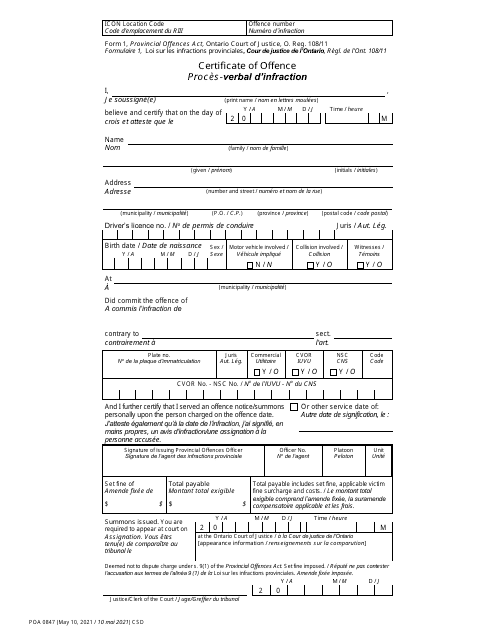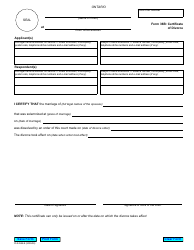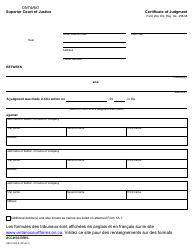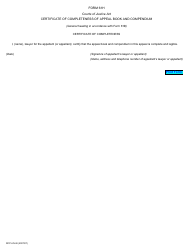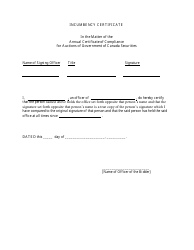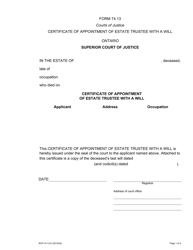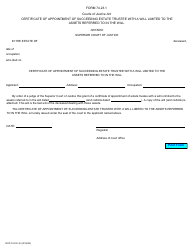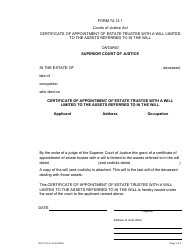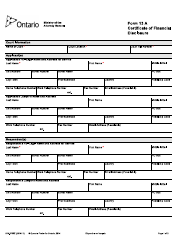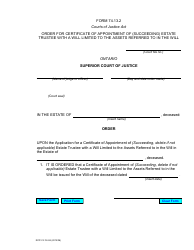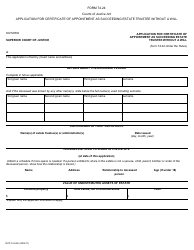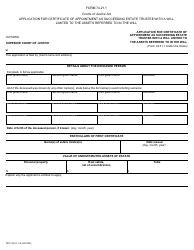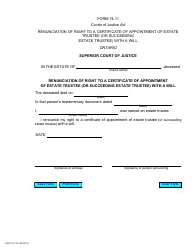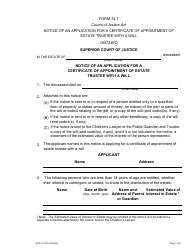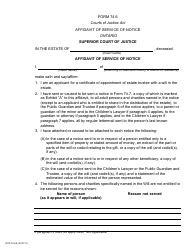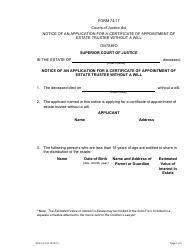Form 1 Certificate of Offence - Ontario, Canada (English / French)
Form 1 Certificate of Offence in Ontario, Canada is not officially used to refer to any specific document. It is possible that this particular form may not exist or is being referred to by a different name. Without further information, it is not possible to provide a specific answer.
The form is filled out by the police officer who issues the offence in Ontario, Canada.
FAQ
Q: What is a Form 1 Certificate of Offence?
A: A Form 1 Certificate of Offence is a document used in Ontario, Canada to record certain types of offenses.
Q: What offenses are recorded on a Form 1 Certificate of Offence?
A: A Form 1 Certificate of Offence is used for offenses like traffic violations, bylaw infractions, or provincial statutes.
Q: What information is included on a Form 1 Certificate of Offence?
A: A Form 1 Certificate of Offence includes details such as the offense code, date and location of the offense, and the name and contact information of the person issued the offense.
Q: What should I do if I receive a Form 1 Certificate of Offence?
A: If you receive a Form 1 Certificate of Offence, you should carefully read the information on the form and follow the instructions on how to proceed, which may include paying a fine or attending court.
Q: Can I dispute a Form 1 Certificate of Offence?
A: Yes, you can dispute a Form 1 Certificate of Offence by following the instructions provided on the form. This may involve requesting a trial or seeking legal advice.
Q: What are the consequences of not addressing a Form 1 Certificate of Offence?
A: Not addressing a Form 1 Certificate of Offence may result in additional fines, license suspensions, or other legal consequences. It is important to take the necessary steps outlined on the form.
Q: Is a Form 1 Certificate of Offence only used in Ontario?
A: Yes, a Form 1 Certificate of Offence is specific to Ontario, Canada and is not used in other provinces or territories.
Q: Is the Form 1 Certificate of Offence available in both English and French?
A: Yes, the Form 1 Certificate of Offence is available in both English and French versions to accommodate the official languages of Canada.
